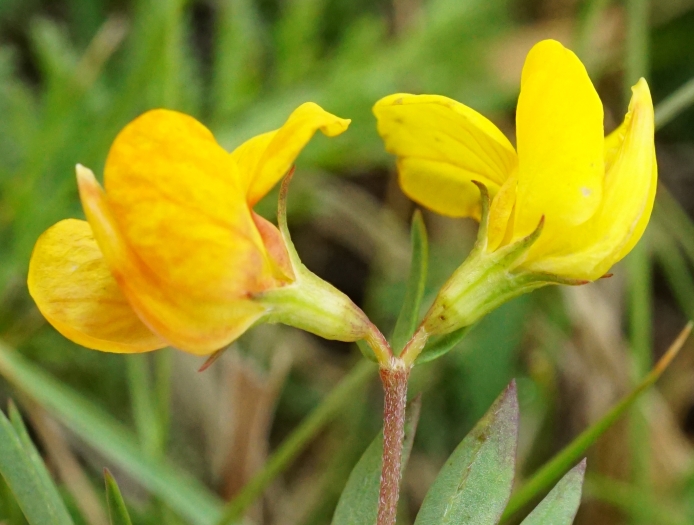Narrowleaf Bird’s-Foot Trefoil
(Lotus tenuis)
Narrowleaf Bird’s-Foot Trefoil (Lotus tenuis)
/
/

Patrick Hacker
CC BY 4.0
Image By:
Patrick Hacker
Recorded By:
Copyright:
CC BY 4.0
Copyright Notice:
Photo by: Patrick Hacker | License Type: CC BY 4.0 | License URL: http://creativecommons.org/licenses/by/4.0/ | Rights Holder: Patrick Hacker | Publisher: iNaturalist | Date Created: 2021-09-18T11:53:08-07:00 |






















Estimated Native Range
Summary
Lotus tenuis, commonly known as Narrowleaf Bird’s-foot Trefoil, is a perennial herb in the pea family, native to temperate grasslands, meadows, and roadsides in Europe and Asia. It typically grows to a height of 10-50 cm and spreads to form a low mat. The plant features delicate, narrow leaves and produces small, yellow pea-like flowers from late spring to late summer, which are moderately showy and attract pollinators. The stems can root at the nodes, allowing the plant to spread effectively.
Narrowleaf Bird’s-foot Trefoil is valued for its nitrogen-fixing ability, which can improve soil fertility, and its resilience to poor soil conditions, making it useful for erosion control and as a forage plant in agriculture. It is also used in ornamental plantings for ground cover and in wildflower meadows. In cultivation, it prefers full sun to partial shade and can tolerate a range of soil types, provided they are well-drained. While it is drought-tolerant once established, moderate watering will encourage more vigorous growth. Gardeners should be cautious, as Lotus tenuis can become invasive outside its native range, especially in similar temperate climates.CC BY-SA 4.0
Narrowleaf Bird’s-foot Trefoil is valued for its nitrogen-fixing ability, which can improve soil fertility, and its resilience to poor soil conditions, making it useful for erosion control and as a forage plant in agriculture. It is also used in ornamental plantings for ground cover and in wildflower meadows. In cultivation, it prefers full sun to partial shade and can tolerate a range of soil types, provided they are well-drained. While it is drought-tolerant once established, moderate watering will encourage more vigorous growth. Gardeners should be cautious, as Lotus tenuis can become invasive outside its native range, especially in similar temperate climates.CC BY-SA 4.0
Plant Description
- Plant Type:
- Height: 0.5-1.5 feet
- Width: 1-2 feet
- Growth Rate: Moderate, Slow
- Flower Color: Yellow
- Flowering Season: Spring, Summer
- Leaf Retention: Deciduous
Growth Requirements
- Sun: Full Sun, Part Shade
- Water: Low
- Drainage: Fast, Medium, Slow
Common Uses
Drought Tolerant, Low Maintenance, Salt Tolerant
Natural Habitat
Temperate grasslands, meadows, and roadsides in western and southern Europe and southwest Asia
Other Names
Common Names: Creeping trefoil , Narrowleaf Bird’s-Foot Trefoil , Slender Trefoil , Lâdvenec Tonkij , Watari-Miyakogusa , Xi Ye Bai Mai Gen
Scientific Names: Lotus tenuis , Dorycnium iberecum , Lotos glaber subsp. tenuifolius , Lotus acutus , Lotus acutus , Lotus campestris , Lotus corniculatus f. tenuifolius , Lotus corniculatus subsp. tenuifolis , Lotus corniculatus subsp. tenuifolius , Lotus corniculatus subsp. tenuifolius
GBIF Accepted Name: